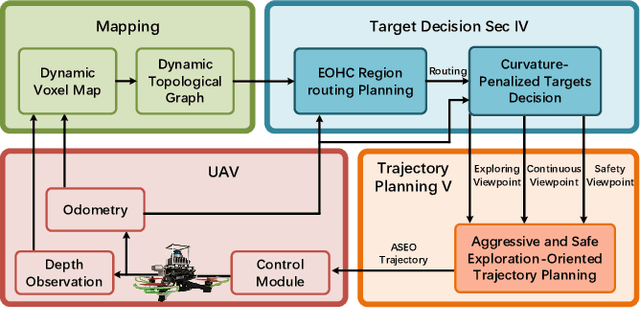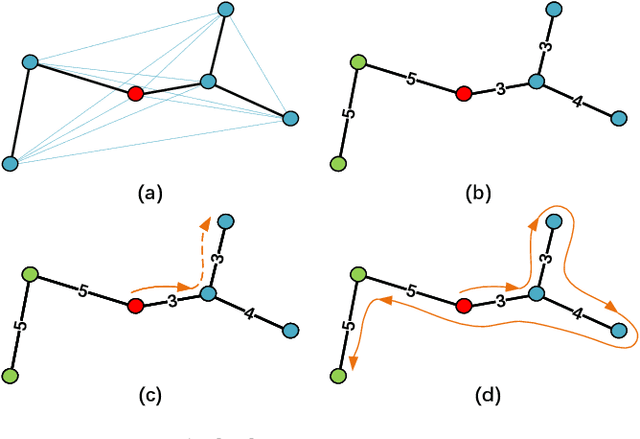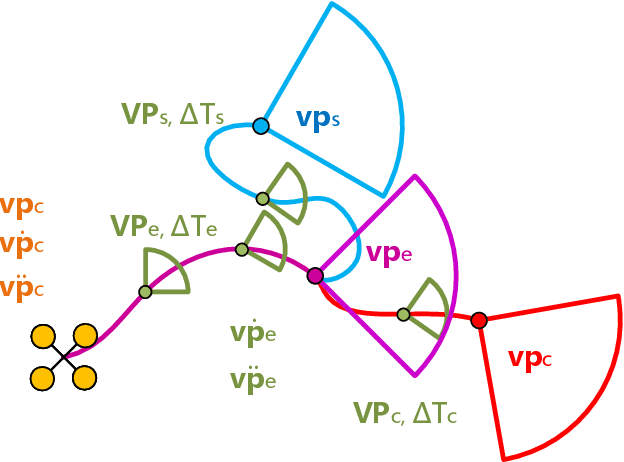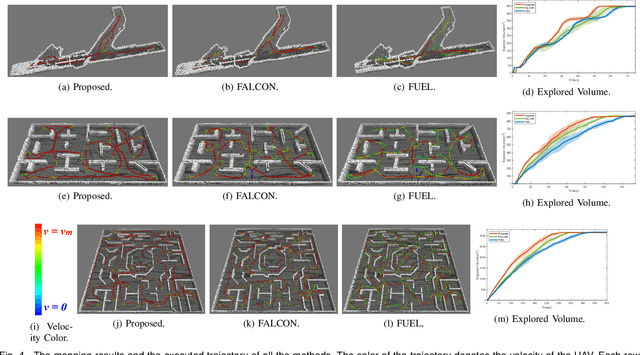Ziyu Wang
Jake
FairCauseSyn: Towards Causally Fair LLM-Augmented Synthetic Data Generation
Jun 23, 2025Abstract:Synthetic data generation creates data based on real-world data using generative models. In health applications, generating high-quality data while maintaining fairness for sensitive attributes is essential for equitable outcomes. Existing GAN-based and LLM-based methods focus on counterfactual fairness and are primarily applied in finance and legal domains. Causal fairness provides a more comprehensive evaluation framework by preserving causal structure, but current synthetic data generation methods do not address it in health settings. To fill this gap, we develop the first LLM-augmented synthetic data generation method to enhance causal fairness using real-world tabular health data. Our generated data deviates by less than 10% from real data on causal fairness metrics. When trained on causally fair predictors, synthetic data reduces bias on the sensitive attribute by 70% compared to real data. This work improves access to fair synthetic data, supporting equitable health research and healthcare delivery.
EDEN: Efficient Dual-Layer Exploration Planning for Fast UAV Autonomous Exploration in Large 3-D Environments
Jun 05, 2025



Abstract:Efficient autonomous exploration in large-scale environments remains challenging due to the high planning computational cost and low-speed maneuvers. In this paper, we propose a fast and computationally efficient dual-layer exploration planning method. The insight of our dual-layer method is efficiently finding an acceptable long-term region routing and greedily exploring the target in the region of the first routing area with high speed. Specifically, the proposed method finds the long-term area routing through an approximate algorithm to ensure real-time planning in large-scale environments. Then, the viewpoint in the first routing region with the lowest curvature-penalized cost, which can effectively reduce decelerations caused by sharp turn motions, will be chosen as the next exploration target. To further speed up the exploration, we adopt an aggressive and safe exploration-oriented trajectory to enhance exploration continuity. The proposed method is compared to state-of-the-art methods in challenging simulation environments. The results show that the proposed method outperforms other methods in terms of exploration efficiency, computational cost, and trajectory speed. We also conduct real-world experiments to validate the effectiveness of the proposed method. The code will be open-sourced.
UniSTPA: A Safety Analysis Framework for End-to-End Autonomous Driving
May 21, 2025Abstract:As autonomous driving technology continues to advance, end-to-end models have attracted considerable attention owing to their superior generalisation capability. Nevertheless, such learning-based systems entail numerous safety risks throughout development and on-road deployment, and existing safety-analysis methods struggle to identify these risks comprehensively. To address this gap, we propose the Unified System Theoretic Process Analysis (UniSTPA) framework, which extends the scope of STPA from the operational phase to the entire lifecycle of an end-to-end autonomous driving system, including information gathering, data preparation, closed loop training, verification, and deployment. UniSTPA performs hazard analysis not only at the component level but also within the model's internal layers, thereby enabling fine-grained assessment of inter and intra module interactions. Using a highway Navigate on Autopilot function as a case study, UniSTPA uncovers multi-stage hazards overlooked by conventional approaches including scene design defects, sensor fusion biases, and internal model flaws, through multi-level causal analysis, traces these hazards to deeper issues such as data quality, network architecture, and optimisation objectives. The analysis result are used to construct a safety monitoring and safety response mechanism that supports continuous improvement from hazard identification to system optimisation. The proposed framework thus offers both theoretical and practical guidance for the safe development and deployment of end-to-end autonomous driving systems.
PPTNet: A Hybrid Periodic Pattern-Transformer Architecture for Traffic Flow Prediction and Congestion Identification
May 19, 2025



Abstract:Accurate prediction of traffic flow parameters and real time identification of congestion states are essential for the efficient operation of intelligent transportation systems. This paper proposes a Periodic Pattern Transformer Network (PPTNet) for traffic flow prediction, integrating periodic pattern extraction with the Transformer architecture, coupled with a fuzzy inference method for real-time congestion identification. Firstly, a high-precision traffic flow dataset (Traffic Flow Dataset for China's Congested Highways and Expressways, TF4CHE) suitable for congested highway scenarios in China is constructed based on drone aerial imagery data. Subsequently, the proposed PPTNet employs Fast Fourier Transform to capture multi-scale periodic patterns and utilizes two-dimensional Inception convolutions to efficiently extract intra and inter periodic features. A Transformer decoder dynamically models temporal dependencies, enabling accurate predictions of traffic density and speed. Finally, congestion probabilities are calculated in real-time using the predicted outcomes via a Mamdani fuzzy inference-based congestion identification module. Experimental results demonstrate that the proposed PPTNet significantly outperforms mainstream traffic prediction methods in prediction accuracy, and the congestion identification module effectively identifies real-time road congestion states, verifying the superiority and practicality of the proposed method in real-world traffic scenarios. Project page: https://github.com/ADSafetyJointLab/PPTNet.
CDF-RAG: Causal Dynamic Feedback for Adaptive Retrieval-Augmented Generation
Apr 17, 2025Abstract:Retrieval-Augmented Generation (RAG) has significantly enhanced large language models (LLMs) in knowledge-intensive tasks by incorporating external knowledge retrieval. However, existing RAG frameworks primarily rely on semantic similarity and correlation-driven retrieval, limiting their ability to distinguish true causal relationships from spurious associations. This results in responses that may be factually grounded but fail to establish cause-and-effect mechanisms, leading to incomplete or misleading insights. To address this issue, we introduce Causal Dynamic Feedback for Adaptive Retrieval-Augmented Generation (CDF-RAG), a framework designed to improve causal consistency, factual accuracy, and explainability in generative reasoning. CDF-RAG iteratively refines queries, retrieves structured causal graphs, and enables multi-hop causal reasoning across interconnected knowledge sources. Additionally, it validates responses against causal pathways, ensuring logically coherent and factually grounded outputs. We evaluate CDF-RAG on four diverse datasets, demonstrating its ability to improve response accuracy and causal correctness over existing RAG-based methods. Our code is publicly available at https://github.com/ elakhatibi/CDF-RAG.
Accelerating Multi-Objective Collaborative Optimization of Doped Thermoelectric Materials via Artificial Intelligence
Apr 11, 2025Abstract:The thermoelectric performance of materials exhibits complex nonlinear dependencies on both elemental types and their proportions, rendering traditional trial-and-error approaches inefficient and time-consuming for material discovery. In this work, we present a deep learning model capable of accurately predicting thermoelectric properties of doped materials directly from their chemical formulas, achieving state-of-the-art performance. To enhance interpretability, we further incorporate sensitivity analysis techniques to elucidate how physical descriptors affect the thermoelectric figure of merit (zT). Moreover, we establish a coupled framework that integrates a surrogate model with a multi-objective genetic algorithm to efficiently explore the vast compositional space for high-performance candidates. Experimental validation confirms the discovery of a novel thermoelectric material with superior $zT$ values in the medium-temperature regime.
Synthetic Video Enhances Physical Fidelity in Video Synthesis
Mar 26, 2025Abstract:We investigate how to enhance the physical fidelity of video generation models by leveraging synthetic videos derived from computer graphics pipelines. These rendered videos respect real-world physics, such as maintaining 3D consistency, and serve as a valuable resource that can potentially improve video generation models. To harness this potential, we propose a solution that curates and integrates synthetic data while introducing a method to transfer its physical realism to the model, significantly reducing unwanted artifacts. Through experiments on three representative tasks emphasizing physical consistency, we demonstrate its efficacy in enhancing physical fidelity. While our model still lacks a deep understanding of physics, our work offers one of the first empirical demonstrations that synthetic video enhances physical fidelity in video synthesis. Website: https://kevinz8866.github.io/simulation/
Expert Race: A Flexible Routing Strategy for Scaling Diffusion Transformer with Mixture of Experts
Mar 20, 2025Abstract:Diffusion models have emerged as mainstream framework in visual generation. Building upon this success, the integration of Mixture of Experts (MoE) methods has shown promise in enhancing model scalability and performance. In this paper, we introduce Race-DiT, a novel MoE model for diffusion transformers with a flexible routing strategy, Expert Race. By allowing tokens and experts to compete together and select the top candidates, the model learns to dynamically assign experts to critical tokens. Additionally, we propose per-layer regularization to address challenges in shallow layer learning, and router similarity loss to prevent mode collapse, ensuring better expert utilization. Extensive experiments on ImageNet validate the effectiveness of our approach, showcasing significant performance gains while promising scaling properties.
ArticuBot: Learning Universal Articulated Object Manipulation Policy via Large Scale Simulation
Mar 04, 2025Abstract:This paper presents ArticuBot, in which a single learned policy enables a robotics system to open diverse categories of unseen articulated objects in the real world. This task has long been challenging for robotics due to the large variations in the geometry, size, and articulation types of such objects. Our system, Articubot, consists of three parts: generating a large number of demonstrations in physics-based simulation, distilling all generated demonstrations into a point cloud-based neural policy via imitation learning, and performing zero-shot sim2real transfer to real robotics systems. Utilizing sampling-based grasping and motion planning, our demonstration generalization pipeline is fast and effective, generating a total of 42.3k demonstrations over 322 training articulated objects. For policy learning, we propose a novel hierarchical policy representation, in which the high-level policy learns the sub-goal for the end-effector, and the low-level policy learns how to move the end-effector conditioned on the predicted goal. We demonstrate that this hierarchical approach achieves much better object-level generalization compared to the non-hierarchical version. We further propose a novel weighted displacement model for the high-level policy that grounds the prediction into the existing 3D structure of the scene, outperforming alternative policy representations. We show that our learned policy can zero-shot transfer to three different real robot settings: a fixed table-top Franka arm across two different labs, and an X-Arm on a mobile base, opening multiple unseen articulated objects across two labs, real lounges, and kitchens. Videos and code can be found on our project website: https://articubot.github.io/.
FSMP: A Frontier-Sampling-Mixed Planner for Fast Autonomous Exploration of Complex and Large 3-D Environments
Feb 28, 2025Abstract:In this paper, we propose a systematic framework for fast exploration of complex and large 3-D environments using micro aerial vehicles (MAVs). The key insight is the organic integration of the frontier-based and sampling-based strategies that can achieve rapid global exploration of the environment. Specifically, a field-of-view-based (FOV) frontier detector with the guarantee of completeness and soundness is devised for identifying 3-D map frontiers. Different from random sampling-based methods, the deterministic sampling technique is employed to build and maintain an incremental road map based on the recorded sensor FOVs and newly detected frontiers. With the resulting road map, we propose a two-stage path planner. First, it quickly computes the global optimal exploration path on the road map using the lazy evaluation strategy. Then, the best exploration path is smoothed for further improving the exploration efficiency. We validate the proposed method both in simulation and real-world experiments. The comparative results demonstrate the promising performance of our planner in terms of exploration efficiency, computational time, and explored volume.
 Add to Chrome
Add to Chrome Add to Firefox
Add to Firefox Add to Edge
Add to Edge